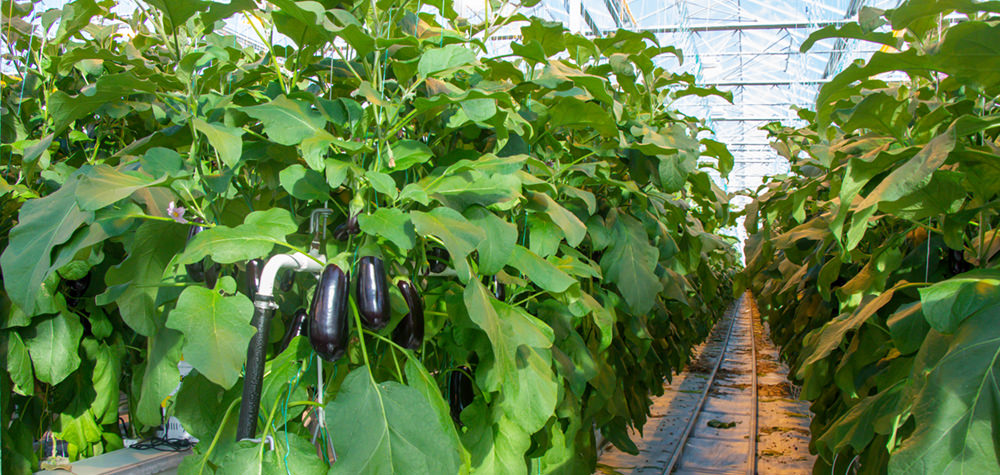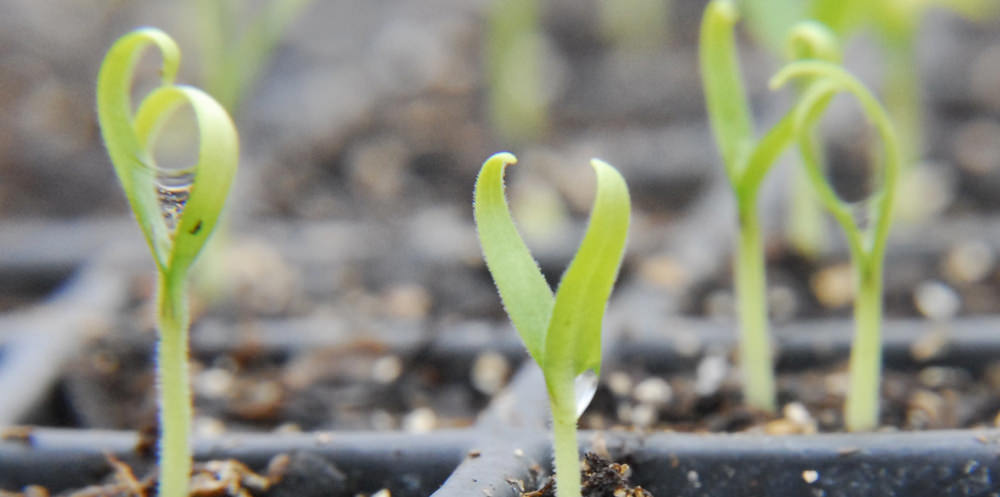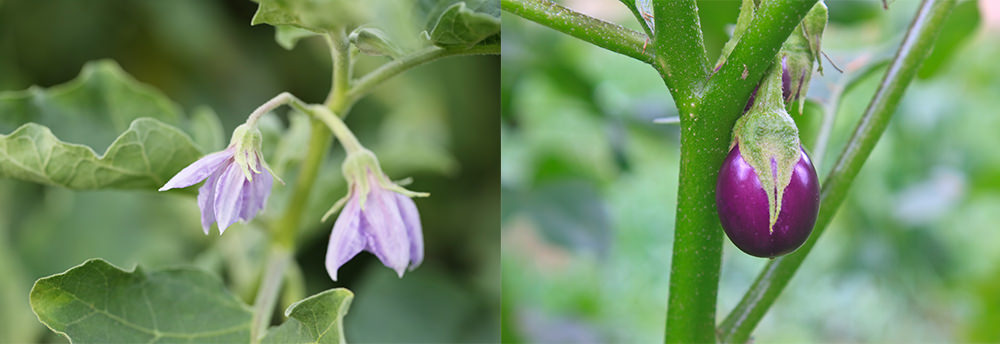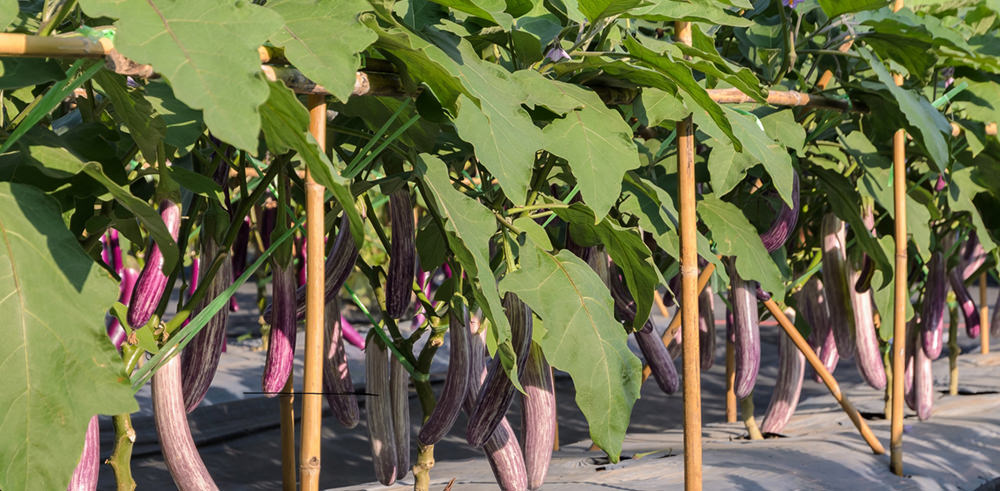How to Grow Eggplants in Greenhouses
Eggplants are planted on open fields traditionally. As a light-loving plant, eggplants grow well under sufficient natural lights. But when it comes to winter or cloudy days, growth of eggplants is limited. With the developments of environment control system, supplemental lighting and relevant technologies, eggplants can be grown successfully with both soil and soil-less system in a greenhouse. Greenhouse eggplants seem to be less popular than other greenhouse crops like tomatoes and peppers. But in fact, a well-controlled environment makes growing eggplant in greenhouses effective and profitable. Today, we would like to talk about how to grow eggplants in greenhouses. Let’s start it.

About eggplants
Eggplant is a versatile vegetable. They are rich in phenolic compounds and minerals like P, K, Ca and Mg. Different varieties of eggplants have different colors including purple, black, green, white, and pink. Due to the high nutritional value and a wide range of colors, there are so many recipes of eggplants.
For cultivation, eggplant is a warm-season and nightshade crop. The habits of eggplants are similar to tomatoes and peppers. High intensity light in certain range promote the growth of eggplant. But eggplant has less tolerance to cold temperature. It takes about 80 days to harvest for the transplanted crops. Eggplant is a perennial crop, which means eggplants grow back every year, and the growth is determinate. Besides, eggplant is a day-neutral plant. The flowering of eggplant does not be affected by day length.
When and how to start eggplants in a greenhouse
The time to start eggplants depends on your locations. In additional, time for growing eggplants relies on how you start it. There are two main ways to star eggplants. One is from seeds, another from seedlings. If you decide to start the cultivation from seeds, sow the seeds about 6 -8 weeks before the last spring frost. For example, the last spring frost dates (2022) for Dallas, TX is Mar 9. Growers in Dallas can sow the seeds in January. Seeds can be placed in flats or cell trays. If you would like to purchase the seedling for eggplant cultivation, you can start it after the last spring frost date.

How to transplant eggplants
Pay attention to your seedlings, when they are about 10” tall and have three to four true leaves, it is time for transplanting. To avoid damage the roots of eggplants, remove the seedling gently from trays or flats. Keeping enough space between each plant allows them to grow thrive. Otherwise, the large leaves of eggplants will affect the light interception in the canopy and cause poor growth or even diseases.
How to pollinate eggplant in a greenhouse
As a fruit-bearing vegetable, the fruit set of eggplants highly depends on pollination. Eggplant is self-compatible, which means it contains both male and female parts. In greenhouses, the pollination of eggplant is limited by the low are movement and high humidity. Therefore, pollination of eggplant in greenhouses needs assistance. Mechanical vibration or bumblebees are the common options for pollination assistance. Apart from the assistance, temperature plays an important role in flowering and fruiting. Keeping optimal temperature is beneficial for pollination of eggplants.
Environment requirements of greenhouse eggplants
Environment control is critical for growing eggplants in a greenhouse. Water, temperature, and lighting are the three important factors for greenhouse eggplant. Here, we have some recommendations of the environment requirements of greenhouse eggplants for reference.
-
Water
Eggplants require a large amount of water, and they need consistent irrigation. Irregular water will cause the unstable soil moisture, resulting uneven growth and flower loss. Besides, avoid watering above the foliage. That because the wet foliage and fruit are easy to induce diseases. Watering under the foliage prevents the leaves and fruit from wet as well as keeping soil moist. The watering system called drip irrigation is ideal for eggplant cultivation. Although eggplants love water, don’t provide excessive water, or it will damage the roots.
-
Temperature
As mentioned before, eggplant is a warm-season crop. Eggplant can survive in a temperature range between 12°C - 35°C. But the temperature below 18°C or above 35°C will result the poor growth, hard fruit development, and the pollination problems. For germination, the optimal temperature is 19°C to 26°C. When it comes to seedling period, temperatures range from 19°C -22°C during the day and 16°C to 19°C at night are optimal. To accelerate the fruit set and flowering, temperature difference between day and night during this period should be 5°C or a little more. The day time temperature should be higher than seedling stage as well. Temperature at 21°C - 26°C in daytime and 16°C - 21°C at night helps to develop fruits and flowers.

-
Lighting
Eggplant is a summer and light-loving crop. It needs about 8 to 10 hours of lighting per day. To ensure the sufficient lighting for eggplants, avoid the shade from surrounding trees or building. Light is not required to seeds to germinate. But the seedlings emerge, place the plants under grow lights. With the help of artificial grow lights, seedlings can develop shorter and stronger stem. Or seedlings will become leggy and weak to reach more light. The poor seedlings may cause lower yields. Eggplants requires the 8-10 hours of lighting per day, but the light may inadequate during cloudy or raining days. LED grow lights are the ideal option to supplement light for eggplants. Except for the long period of light, eggplant also require high daily light integral (DLI). Greenhouse structures such as the roof material will affect the actual amount of sunlight that arrives the greenhouse interior because of their different light transmittance rates. Even the glass greenhouses cannot transmits all the sunlight into greenhouses, which means the DLI may be lower than actual needs. Adding LED grow lights to your greenhouse can ensure the high DLI required by eggplants. However, supplementing the grow light to the whole eggplant production seems to be costly. Using LED grow lights during seedling and young plant stages is more effective and efficient. If you have any problem about the lighting of eggplant cultivation, feel free to contact us.
How to manage the eggplants
Managing the plants is aimed to improve yields and achieve better fruit quality. Eggplants have high intensity production. To support the heavy fruit load, you need to stake or trellis the eggplants like greenhouse tomatoes. Prune or train the plants to 2-4 main stems. This allows the increase of lateral branches, and then contributes to higher yields. Please note that higher yields do not equal to good quality fruits. Excessive branch density is detrimental to fruit size and market values. You should also pay attention to the yellowed, old, or diseased leaves. Remove these leaves in time allows air circulation and light interception, and avoid diseases.

When to harvest eggplants
Fruits are ready for harvest when the skin is glossy, and they reach the market size. Over-mature eggplants taste pithy and bitter. If the skins look faded and tough soft, they are over-mature. Press the skins of fruits gently, if they do not rebound, is time to harvest the fruits. If you cut the fruit open, the seeds and pulps should be white. The fruits should be harvested often to allow the continued fruit set. Since the stems of fruits are thick, use the sharp knife to cut the fruits from the plant. This can remove the fruits from the plant easily without damaging the plant.

